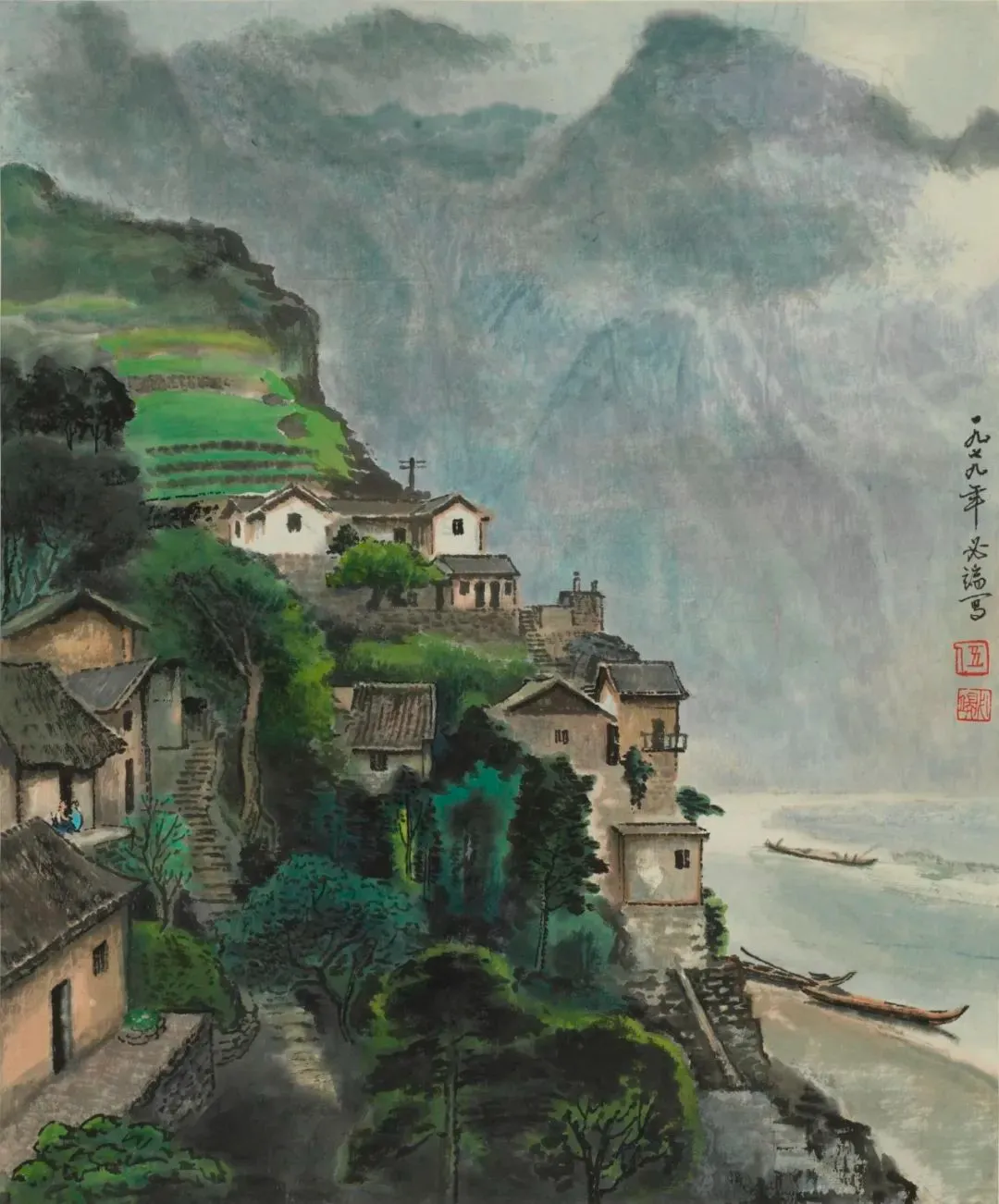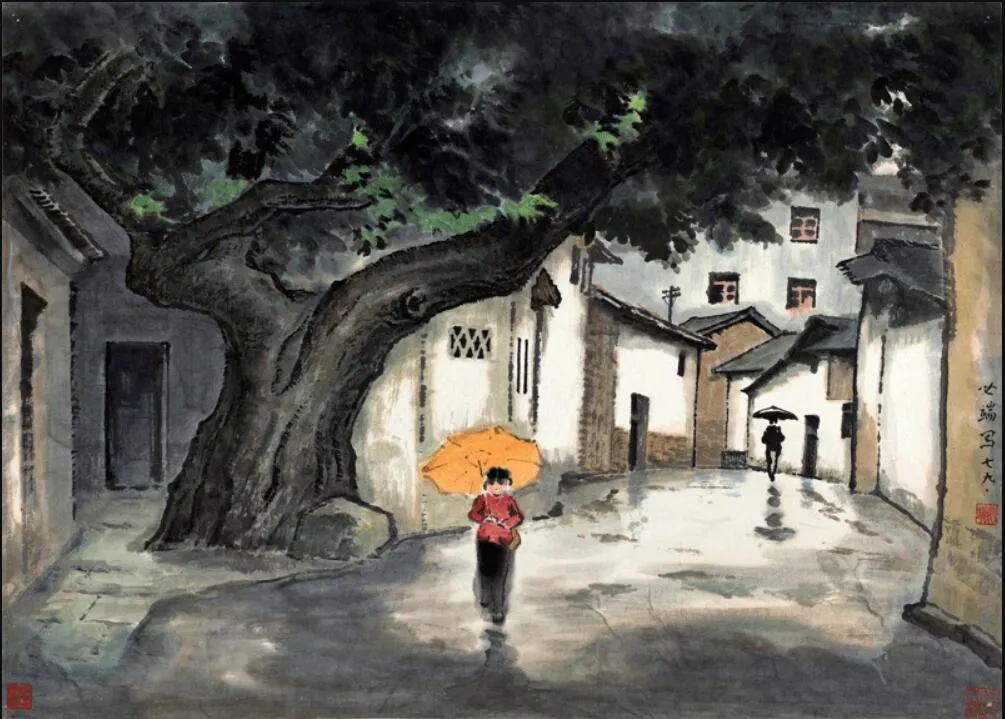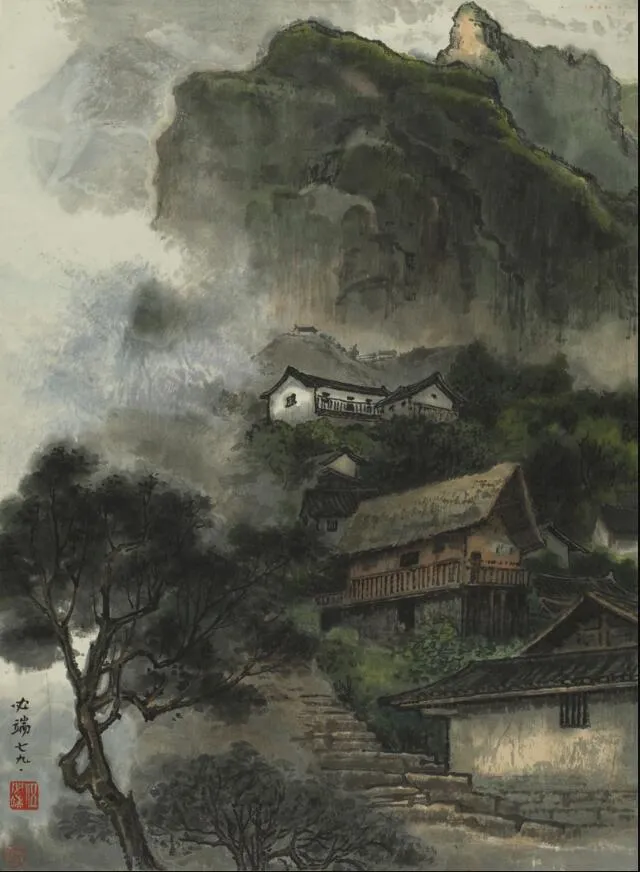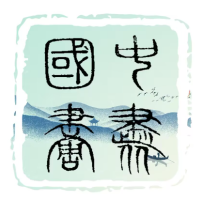伍必端,生于江南,汲山海灵气,负文脉深根,行艺半生,开版画新风,融中西技法于毫端。其笔刀共举,木刻、石版、铜版、丝网、水彩、水墨诸式并臻妙境,格调独树,气韵深长。画者心语,寄情天地,伍公所为,根植民间,映照现实,于平凡中见深意,于风物中窥大象。

伍氏笔底烟云,意融万象。山河壮阔,烽火余烬,新景初成,皆寄深怀,气韵悠长。画面静穆,情思自生,笔断意连,神与物交,含蓄深沉,悠然不尽。疏密有致,若风行林间,隐隐作响;浓淡相映,似日落山巅,苍茫余辉。无言之境,入目三分,观者心动,神远无垠。
观《铁流》《恰巴耶夫》,人物跃纸,神采飞扬。眉宇间沉毅,姿态中从容,形神相融,气韵生动。线条轻重错落,意象自然流转。或昂首策马,怀铁骨雄心;或静立凝望,笃志千仞。风骨一展,情怀自显,画如深水,澄明映怀。
无声胜有,妙在空灵。笔尽而意不尽,墨止而气自生。画中留白,气象自生,似山川有隐,若天地藏意。观者凝视,情随画动,心与景通,一时物我两忘。此画无尽处,正天地浩然之意,心中不语而自明。



刀意沉凝,锋芒内敛,古今汇聚,自成一格。伍公学艺异域,承法度之严,归国后融乡土之韵,刀锋轻重之间,游刃而自如。刻画之妙,简练中见丰盈,疏朗中藏精巧。行刀若秋风扫叶,明快洒脱;驻锋如冬石积雪,沉稳厚重。间取年画之欢,剪纸之巧,融情于形,化技为趣,成百态之妙趣。《葵花地》纸版,清简之色映盛阳,线条朗朗如晨风,葵花向阳,明艳天成,画面气象开阔,天地清明。其笔不求繁缛,而意远神长,尺幅间自有万象盈动。
形神相映,以神领形。伍公画人物,不囿于形而神出其内。炭笔《周总理像》,光影隐现,气韵萦回,眉宇间平和,轮廓中峻朗,深邃胸襟跃于静态,观者凝视,如临其面。少笔墨而多神采,寥寥几笔间,自生无尽意蕴。此画未必描摹真形,却能传精神,正是形寓于神,意藏于笔。
写生得境,丘壑在怀。伍公临三峡,手随心行,笔墨游走,写江山浩气。长江激湍处,笔随江流,水声浩浩;巉岩险立间,笔循峭势,气韵雄沉。山川之壮,非徒形见,而意内生;江流之势,非止笔达,而气贯全篇。写景而抒怀,绘物而寄情,山河奔涌于纸,笔意如同天地呼应。如此画境,非形而成,乃神所驻,心手一体,造化自成。




中西融汇,意象自生。伍公笔墨,清新秀逸,苍厚内敛,于质朴中见灵气,于明快间藏幽思。师法西形,蕴东方之神韵,笔简意远,气格超然。写意之妙,化形于无痕;结构之工,融法于天成。于线条间映山河之影,于墨色中藏万象之机,观其所作,如风行水上,去留无迹,气韵独绝。
画意不拘而法度自存。层次之妙,虚实互应,笔线起伏,如山川呼吸;墨色浓淡,疏密相间,若云烟行空。形随意转,景从心生,画面既不失规矩,亦不露斧凿之迹。观其一笔一画,若拈花拂叶,随性而发;然于整体观之,章法井然,气象万千,正所谓“大巧若拙”。
笔下造化,意托天地,情寄万物。每作皆从自然取法,得其气韵而不泥其形。山水林泉,风雨晨昏,皆于纸上流转,似真似幻,意蕴深远。画境中隐人间情怀,天地之奇自流于墨间,观者神随意动,胸怀为之开阔,如临高岭远眺,天地浩然无尽。
伍必端以匠心行艺,妙手探道,于版画一域开新径。其作涵时代气象,映自然生机,气度沉潜,意远神长,诚艺林瑰宝。




Wu Biduan: Clouds and Smoke Within the Brush, Subtle Depth Beneath the Blade
Wu Biduan, born in Jiangnan, draws inspiration from the spirit of its mountains and seas, rooted in the deep cultural heritage of the region. His lifelong dedication to art has brought a fresh perspective to printmaking, fusing Chinese and Western techniques into a singular style. His mastery spans woodcut, lithography, copperplate, silkscreen, watercolor, and ink painting, each reaching a realm of excellence. His works reflect the voice of the heart and the emotions of life, grounded in the essence of the people and reality. In the ordinary, he reveals profundity; in the ephemeral, he glimpses the eternal.
From Wu’s brush emerges boundless imagery, where clouds and smoke intertwine with the mountains and rivers, the ashes of war, and the dawn of new eras. His paintings convey solemnity, yet evoke deep emotions, their restrained expression filled with lingering depth. Each stroke finds balance in its density, like wind brushing through forests with a faint, echoing rustle; each shade resonates like the fading light over mountain peaks, imbued with a tranquil glow. In his silent compositions, the spirit of the scene strikes deeply, drawing the viewer into a realm where the mind roams freely and the soul transcends.
In works such as Iron Stream and Chapaev, Wu’s characters leap vividly from the page, their spirit radiant. Determination glimmers in their brows, composure rests in their posture, and their forms blend seamlessly with their essence. His lines, alternately light and bold, move effortlessly, capturing dynamic imagery. Some figures ride boldly, embodying steely resolve; others stand quietly, their steadfast determination etched deeply. The spirit of his art unfolds naturally, like deep waters reflecting unspoken clarity, resonating with an emotional richness that lingers.
Soundless yet resonant, Wu’s art finds its strength in its subtlety. His brush pauses where meaning persists, and his ink halts where spirit takes flight. Empty spaces within his works generate a sense of boundless potential, as if mountains conceal hidden wonders or the heavens hold untold secrets. The viewer, drawn into these spaces, feels their emotions stirred and their thoughts awakened. For a moment, boundaries between self and scene dissolve, revealing an expansive unity. Such art, unspoken yet profound, reflects the grandeur of the cosmos and resonates with unspoken truths.
His mastery of the blade reveals a balance between precision and subtlety, blending ancient traditions with modern sensibilities. Wu honed his craft abroad, absorbing disciplined methodologies, and upon returning home, infused his techniques with the charm of native artistry. His carving, alternately vigorous and delicate, achieves richness through simplicity and ingenuity within clarity. The movement of his blade, like autumn winds sweeping leaves, is both brisk and fluid; its pauses, like snow settling on stones, are steadfast and profound. He incorporates the joy of folk art and the elegance of paper cuts, transforming form into feeling and technique into expression. In his Sunflower Fields, the use of restrained color and crisp lines captures the radiance of sunlight and the vitality of blooms, creating a composition both expansive and serene, its simplicity brimming with vitality.
For Wu, form and spirit are inseparable, with spirit guiding form. His depiction of figures transcends external likeness, capturing the essence within. In his charcoal portrait Premier Zhou, shadow and light intermingle, and vitality flows within the composition. Serenity graces the brow, while strength shapes the contours, quietly revealing profound depth. In just a few strokes, the portrait resonates with boundless meaning. The work eschews mere resemblance, instead embodying spirit and thought through subtle expressions of form and intent.
Through sketching, Wu captures the essence of nature. His visits to the Three Gorges reflect not merely observation but communion with the landscape, where his brush follows the rhythm of his heart. The turbulence of the Yangtze River surges through his strokes, and the majesty of its cliffs finds expression in his lines. His work transcends physical representation, imbuing the natural world with a profound spirit. The flow of the river and the rise of the cliffs become conduits for Wu’s emotional resonance, bringing the dynamic dialogue between mind and nature to life. Here, his art arises not from form alone, but from the spirit embedded within the hand and heart.
In Wu’s hands, Chinese and Western techniques converge seamlessly, creating imagery that feels both fresh and timeless. His brush is light yet confident, his tones subtle yet expressive, balancing vigor and introspection. He employs the structural rigor of Western art and infuses it with the poetic resonance of the East, blending them into a natural harmony. His compositions embody the fleeting beauty of life, their lines and shades capturing the grandeur of the natural world while conveying a quiet profundity.
Wu’s artistry, though unbound by conventions, retains an inherent sense of order. The interplay of layers and contrasts creates a living dialogue between fullness and emptiness, light and shadow. His strokes rise and fall like the breath of the earth, while his use of ink mirrors the ever-shifting clouds. Forms follow the will of the artist, and the scenes emerge from his inner vision, balanced yet free from constraint. Each stroke feels spontaneous, like a petal falling effortlessly, yet the composition as a whole is imbued with profound deliberation, echoing the timeless truth that great skill often conceals itself.
Through his brush, Wu channels the energy of creation, drawing from the vastness of the natural world and infusing it with his deep affection for life. His works, inspired by nature, transcend mere depiction, capturing the vital spirit that lies beneath. Mountains, rivers, forests, and skies flow seamlessly across his canvases, their imagery hovering between reality and dream. Within each scene lies an implicit emotional connection, a reflection of humanity’s bond with the natural world. His art expands the viewer’s perspective, evoking the sensation of standing atop a distant peak, gazing out upon the infinite.
Wu Biduan approaches his art with devotion and ingenuity, carving new paths within the realm of printmaking. His works embody the spirit of the times and the vitality of nature, grounded in quiet strength yet expansive in vision. His legacy stands as a treasure of the artistic world, timeless in its resonance and unmatched in its depth.
责任编辑:苗君
